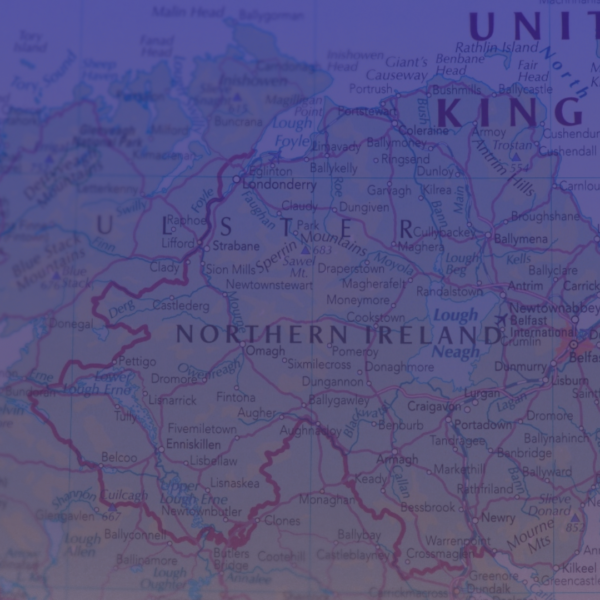
Written by María Morena Saione
Edited by Sibilla Gosso

Introduction
The maritime transport of oil through the Bab el Mandeb Strait, which connects the Red Sea to the Gulf of Aden, accounts for about 8% of the world’s oil supply. The European Union also imports approximately 25% of its oil and natural gas through the Red Sea and the Suez Canal. These are just some of the facts that support the geostrategic importance of the Red Sea for the bloc’s energy security (Dunn & Barden, 2023).
Since the end of 2023, these maritime trade flows have been severely disrupted by a crisis that responds to competing interests in the Middle East, but whose consequences go beyond that region. On 19 November 2023, the Houthi group, an Iranian-backed Shia faction that controls Yemeni territory, began launching drones and missiles against ships in the Red Sea (Scarr et al., 2024). These actions were a response to Israel’s military operations in Gaza following deadly attacks by the militant group Hamas against Israel on 7 October. This was the spark that ignited a crisis that Europe joined as a crucial actor in the attempt to de-escalate the conflict.
How did tensions escalate?
On 10 October, Abdul Malik al-Houthi, leader of the Houthi movement, issued a statement calling on the population to be prepared to defend Palestine, in response to the atrocities perpetrated in the context of the confrontation between Israeli forces and Palestinian armed groups in Gaza since 7 October 2023.
Subsequently, on 19 November, the Houthis hijacked the freighter Galaxy Leader, a commercial vessel in the Red Sea. Since then, they have launched dozens of missile and drone attacks against other commercial vessels (BBC, 2024).
Shortly afterwards, in early February this year, another attack took place west of the Yemeni port of Hodeidah. Naval missiles struck the Morning Tide, a British-owned Barbados-flagged cargo ship, and the Star Nasia, a US vessel flying the flag of the Marshall Islands (CENTCOM, 2024). But it was on 2 March that the Houthis launched their first direct attack on a military vessel. A drone launched from Yemen and aimed at the Italian Navy destroyer Caio Duilio was shot down 6 kilometres from the ship (Sky TG24, 2024).
This constituted a serious violation of international law and an attack on the safety of maritime traffic. Italy’s response, in line with the principle of self-defence, triggered the EU’s involvement in the crisis. On 19 February, Brussel launched mission Aspides, with destroyer Caio Duilio as flagship of the fleet.
Mission Aspides: the EU’s defensive approach
Seeing their interests in the Red Sea threatened, some nations sent their forces to the waterway to protect commercial vessels. This resulted in an overlap of three military missions in the area: Prosperity Guardian, Aspides, and Poseidon Archer.
The first multinational protection initiative has been Operation Prosperity Guardian, announced by US Secretary of Defense Lloyd Austin in December as a “multinational security initiative under the umbrella of the Combined Maritime Forces” of 10 countries: the United States, the United Kingdom, Bahrain, Canada, France, Italy, the Netherlands, Norway, Seychelles and Spain. A key quality of Prosperity Guardian is that it has been entirely defensive (U.S. Department of Defense, 2023).
The US-UK pair has taken a more aggressive approach with Operation Poseidon Archer. The two countries have launched a series of military strikes against Houthi sites in Yemen, starting on 11 January, with the support of Australia, Bahrain, Canada, and the Netherlands. However, this coercive diplomacy has only escalated tensions (Singh, 2024).
The third operation has been the Aspides mission. This operation is particularly relevant to this work not only because of its purely defensive character, which it shares with Prosperity Guardian but also because it represents an exercise of autonomy by the EU in the military sphere and forges its own identity distinct from NATO.
In a regional context plagued by instability since October 2023, the EU took action by launching a defensive mission to protect its interests in the Red Sea. On 19 February 2024, the Foreign Affairs Council launched EUNAVFOR Aspides (‘shield’ in ancient Greek). This EU military operation aimed at protecting freedom of navigation and safeguarding maritime security, especially of merchant and commercial vessels in the Red Sea, the Indian Ocean and, the Gulf, in the framework of the EU’s Common Security and Defence Policy (CSDP). Italy, Greece, France, Belgium, Sweden, and Germany contributed to the Force Headquarters of Operation ASPIDES, while air assets were provided by Italy, France, Germany, and Greece (EEAS, 2024).
However, defining it as ‘defensive’ does not make it a mere accompanying mission, but implies the possibility of responding militarily, as was the case during the drone attack on the destroyer Caio Duilio.
Aspides was designed to act in line with UN Security Council Resolution 2722, which calls for the cessation of Houthi attacks on merchant and commercial vessels, and recognises the right to defend these vessels against such attacks, in line with international law. The UN resolution established two principles that represent the foundations of the mission: the exercise of the navigational rights and freedoms of merchant vessels, and the States’ right to defend their vessels against attacks that may be perpetrated and that undermine the rights referred to in the first principle (UN, 2024).
Escalated risk or indiscriminate attack?
The Houthis stated that they will not stop disrupting trade in the Red Sea until there is a permanent ceasefire in Gaza, and claim that they are targeting vessels flagged, owned, or operated by Israel (Scarr et al., 2024). This begs the question of which countries are most at risk of attack.
In this context, it is pertinent to mention the recently published report by the maritime insurance company “Gard”, which describes the tiered risk of accession to which ships from different countries are exposed when sailing in the waters of the Red Sea. The threat level for vessels directly owned by Israeli companies has been severe since the beginning of the Houthi campaign. Secondly, there is a serious threat level for vessels directly linked to the US and the UK. For merchant vessels linked to countries solely participating in or supporting Operation Prosperity Guardian or Operation Aspides, both with a purely defensive approach, the threat level is assessed as lower compared to countries participating in offensive military actions. Other merchant vessels transiting the Red Sea are exposed to kinetic attacks due to their misidentification and possible proximity to the mentioned threats (Gard, 2024).
However, Gard’s risk categorization has been rendered inaccurate after the Houthi group declared on 9 December 2023 that it would attack all ships bound for Israeli ports (Security Council Report, 2024).
Impact on global trade
This scenario affected not only the security dilemma but also the commercial sphere where the consequences extended to all areas of international trade. Although only a fraction of global trade transits the Suez Canal, the regional impact has indirectly affected other areas, reducing global trade flows and increasing shipping costs, which have doubled since the onset of the Red Sea disruptions. This has led to a decrease in economic activity and an increase in the prices of tradable goods.
The threat posed by Yemeni Houthis to freedom of navigation in the Bab al-Mandab Strait and the southern Red Sea has led many companies to avoid one of the world’s busiest shipping lanes. This has led to a diversion of the usual trade routes in favour of circumnavigating the African continent. This route, although safer in the current context, is longer and therefore more expensive, with consequent repercussions on both retail prices and the activities of national ports (Gard, 2024).
Up to the first half of February 2024, 586 container ships had been diverted, while the tonnage of containers crossing the canal decreased by 82%. The diversion of shipments around the Cape of Good Hope adds between 3,000 and 3,500 nautical miles (6,000 kilometres) to journeys connecting Europe and Asia, adding about 10 days to the journey time (Partington, 2024).
The Red Sea thus became a major focus of geopolitical tension, causing an immediate contraction of market capacity with significant impacts on global trade networks and economic stability.
Preliminary conclusions
The crisis has severely impacted global trade, with significant diversions of shipping routes, increased shipping costs, and a notable reduction in the tonnage of containers crossing the Suez Canal. As a result, companies have rerouted shipments around Africa, leading to higher costs and longer transit times, thereby affecting global trade and economic stability. The Red Sea has thus become a focal point of geopolitical tension, with substantial implications for international trade and security.
The defensive character of the Aspsides mission can act as a double-edged sword, as there is a high risk that the Houthis will not perceive the mission as defensive, as there is no unequivocal European position on the Israeli-Palestinian conflict. This could intensify the confrontation with the Houthis or the chances of being accused of providing indirect support to Israel.
Moreover, the coexistence of several missions in the Red Sea implies the need for coordination between them, which is an operational challenge due to the partially overlapping mandates and limited resources of the participating states. However, the Aspides mission represented a novel approach by the European bloc that gave it greater strategic autonomy, distancing it from US actions and moving towards the status of a global provider of maritime security.
Sources:
BBC. (2024, March 15). Who are the Houthis and why are they attacking Red Sea ships? BBC. Retrieved May 22, 2024, from https://www.bbc.com/news/world-middle-east-67614911
CENTCOM. (2024, February 6). Iranian-Backed Houthi Terrorists conduct Multiple Anti-Ship Ballistic Missile Attacks in t. CentCom. Retrieved May 22, 2024, from https://www.centcom.mil/MEDIA/PRESS-RELEASES/Press-Release-View/Article/3668425/iranian-backed-houthi-terrorists-conduct-multiple-anti-ship-ballistic-missile-a/
Dunn, C., & Barden, J. (2023, December 4). Red Sea chokepoints are critical for international oil and natural gas flows – U.S. Energy Information Administration. EIA. Retrieved May 25, 2024, from https://www.eia.gov/todayinenergy/detail.php?id=61025
EEAS. (2024, 02 19). EUNAVFOR Operation ASPIDES | EEAS. EEAS. Retrieved May 24, 2024, from https://www.eeas.europa.eu/eunavfor-aspides_en?s=410381
European Council. (2024, February 19). Security and freedom of navigation in the Red Sea: Council launches EUNAVFOR ASPIDES. Consilium.europa.eu. Retrieved May 22, 2024, from https://www.consilium.europa.eu/en/press/press-releases/2024/02/19/security-and-freedom-of-navigation-in-the-red-sea-council-launches-new-eu-defensive-operation/
Gard. (2024, April 21). Red sea situation update. Gard. Retrieved May 25, 2024, from https://www.gard.no/articles/red-sea-situation-update/
Partington, R. (2024, January 3). What is the Red Sea crisis, and what does it mean for global trade? The Guardian. Retrieved May 27, 2024, from https://www.theguardian.com/world/2024/jan/03/what-is-the-red-sea-crisis-and-what-does-it-mean-for-global-trade
Scarr, S., Arranz, A., Saul, J., Huang, H., Chowdhury, J., Kawoosa, V. M., & Flynn, D. (2024, February 2). How Yemen’s Houthi rebels are carrying out attacks on Red Sea ships. Reuters. Retrieved May 25, 2024, from https://www.reuters.com/graphics/ISRAEL-PALESTINIANS/SHIPPING-ARMS/lgvdnngeyvo/
Security Council Report. (2024, January 2). Houthi Red Sea Attacks: Briefing and Consultations : What’s In Blue. Security Council Report. Retrieved May 25, 2024, from https://www.securitycouncilreport.org/whatsinblue/2024/01/houthi-red-sea-attacks-briefing-and-consultations.php
Singh, S. (2024, January 25). Deputy Pentagon Press Secretary Sabrina Singh Holds a Press Briefing. Department of Defense. Retrieved May 24, 2024, from https://www.defense.gov/News/Transcripts/Transcript/Article/3657097/deputy-pentagon-press-secretary-sabrina-singh-holds-a-press-briefing/
Sky TG24. (2024, March 3). Mar Rosso, attacco alla nave Duilio: cos’è e quali sono i suoi compiti. Sky TG24. Retrieved May 22, 2024, from https://tg24.sky.it/mondo/2024/03/03/mar-rosso-attacco-nave-duilio-cosa-e#10
- (2024). S/RES/2722(2024). UNdocs.org. Retrieved May 24, 2024, from https://undocs.org/Home/Mobile?FinalSymbol=S%2FRES%2F2722(2024)&Language=E&DeviceType=Desktop&LangRequested=False
U.S. Department of Defense. (2023, December 18). Statement from Secretary of Defense Lloyd J. Austin III on Ensuring Freedom of Navigation. Department of Defense. Retrieved May 24, 2024, from https://www.defense.gov/News/Releases/Release/Article/3621110/statement-from-secretary-of-defense-lloyd-j-austin-iii-on-ensuring-freedom-of-n/

 Funding Peace: The impact of philanthropy on Northern Ireland’s peacebuilding process
Funding Peace: The impact of philanthropy on Northern Ireland’s peacebuilding process  A World on Fire: climate change, global warming, and its impact on human rights in the Global South
A World on Fire: climate change, global warming, and its impact on human rights in the Global South  Evaluating Neutrality: The Role and Future of Neutral Countries within the EU
Evaluating Neutrality: The Role and Future of Neutral Countries within the EU  Curse or Blessing of AI for Youth Employment
Curse or Blessing of AI for Youth Employment 


